Also known as bishop's weed, snow on the mountain and goutweed, Aegopodium podagraria can be a polarizing plant, especially if it grows in your yard as it does in mine. It's enjoyed by some as a short ornamental plant and hated others for its invasiveness. What many don't know is that the plant is edible, tastes pretty good, and is a traditional food in Scandinavia. In this post we'll unpack the details of the plant and how it can be used in the kitchen.
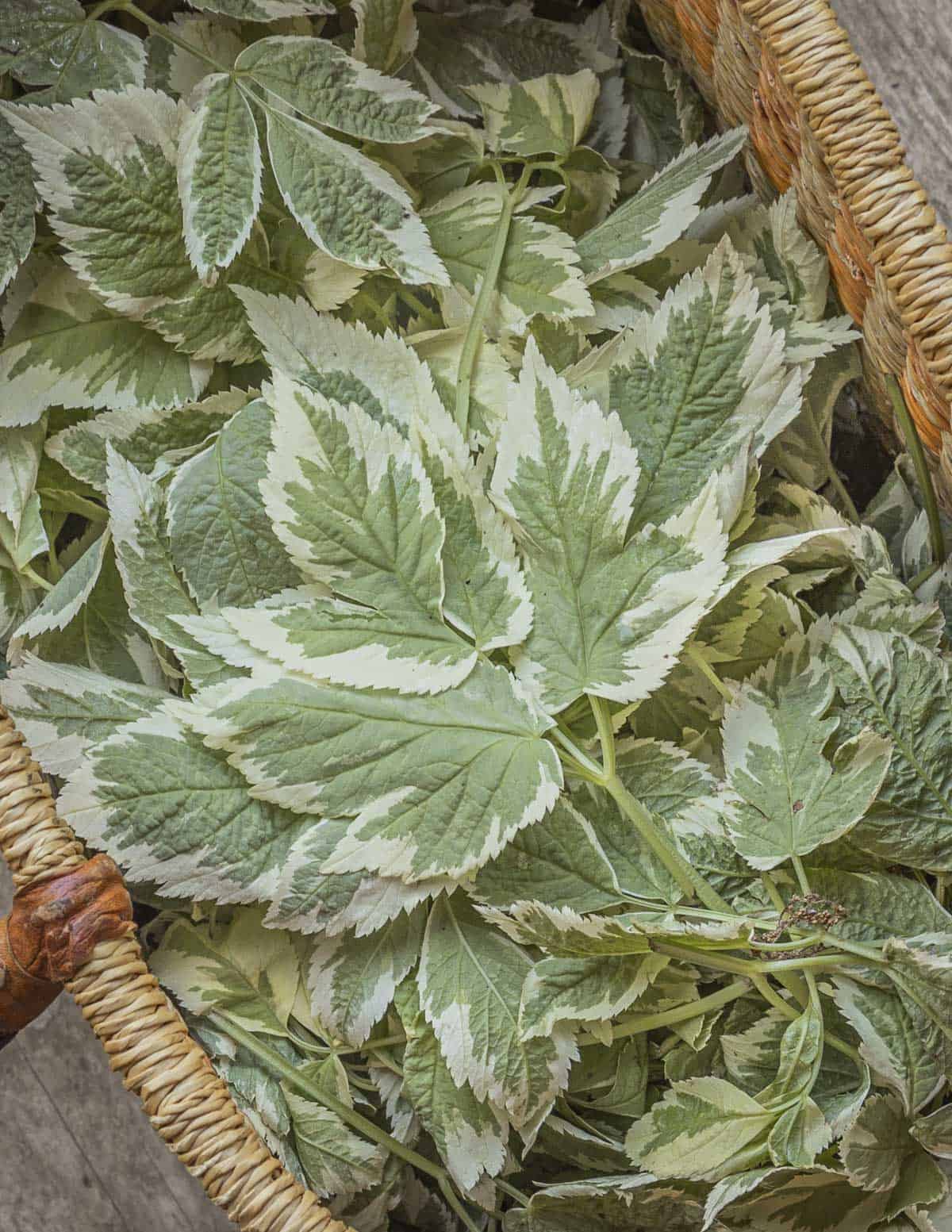
A plant in the Apiaceae family, Aegopodium podagraria is native to Europe and Asia, but has been introduced around the world as an ornamental plant used for ground cover.
Ground Elder Identification
The most important thing to know is that the all-green ground elder and the variegated snow on the mountain cultivar clones are the same plant. While the green leaves with white edges are more common to see planted as an ornamental, I've seen both varieties planted in urban settings. Wild plants will have pure green leaves.
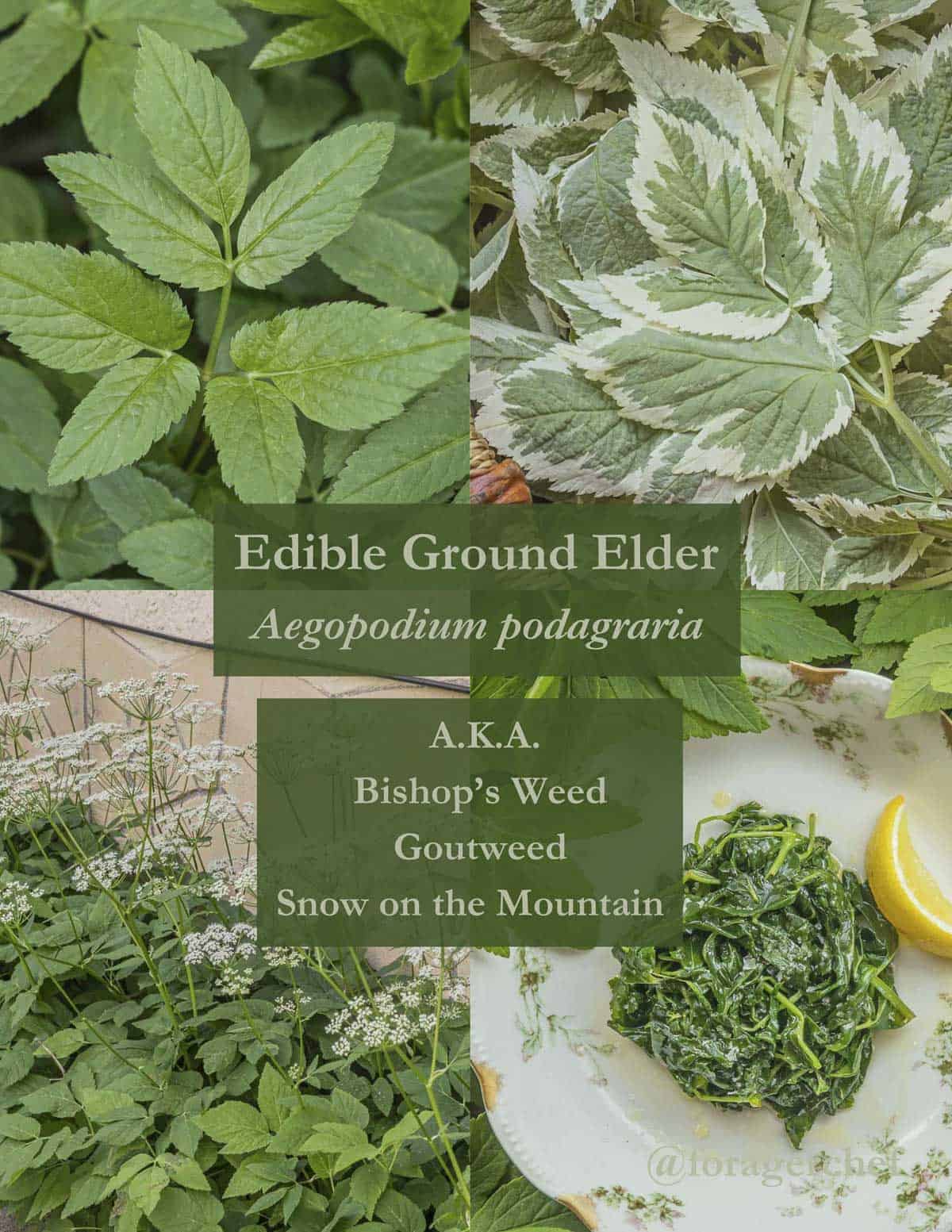
In the spring the plant makes small basal leaves, in the summer you'll see clusters of three leaflets coming from a stem as shown below.
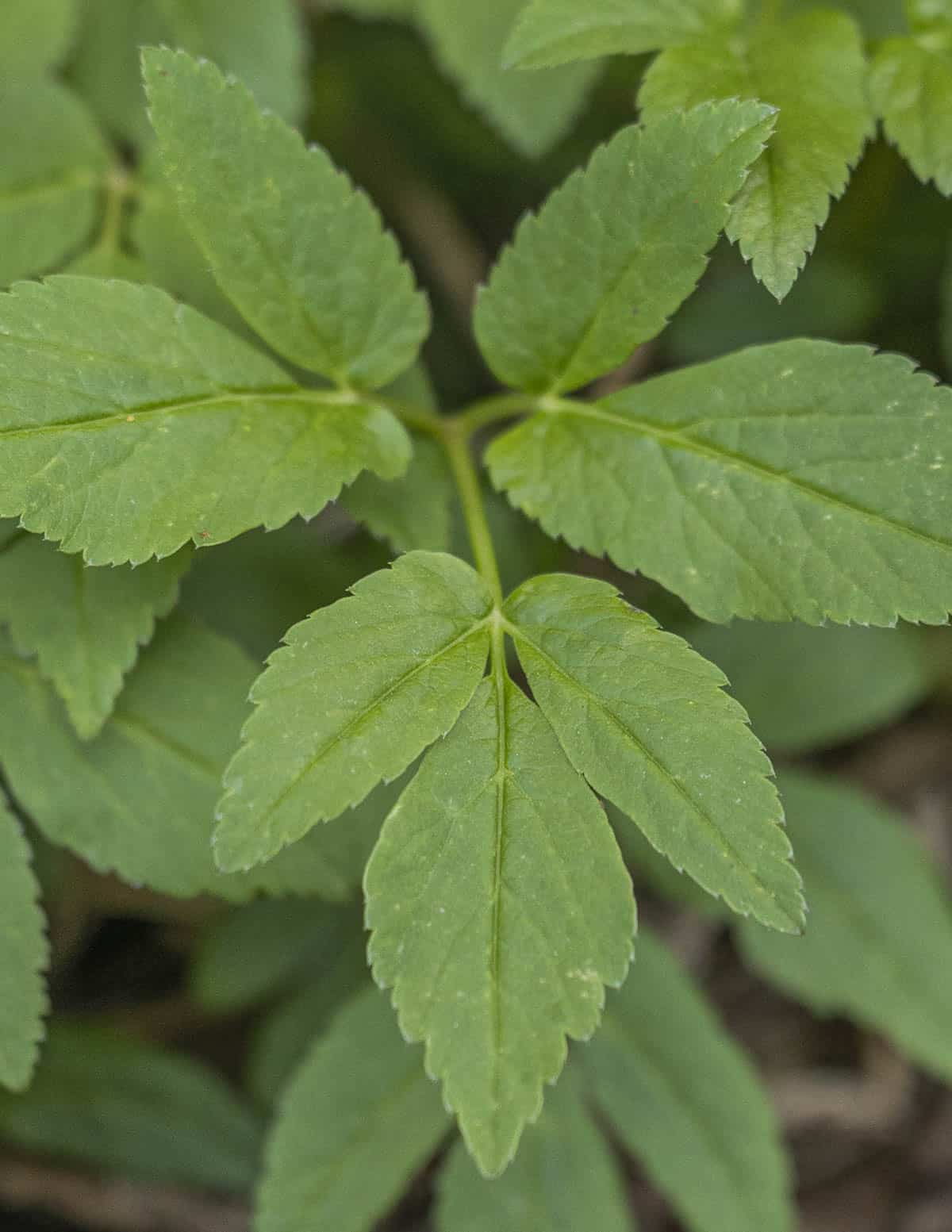
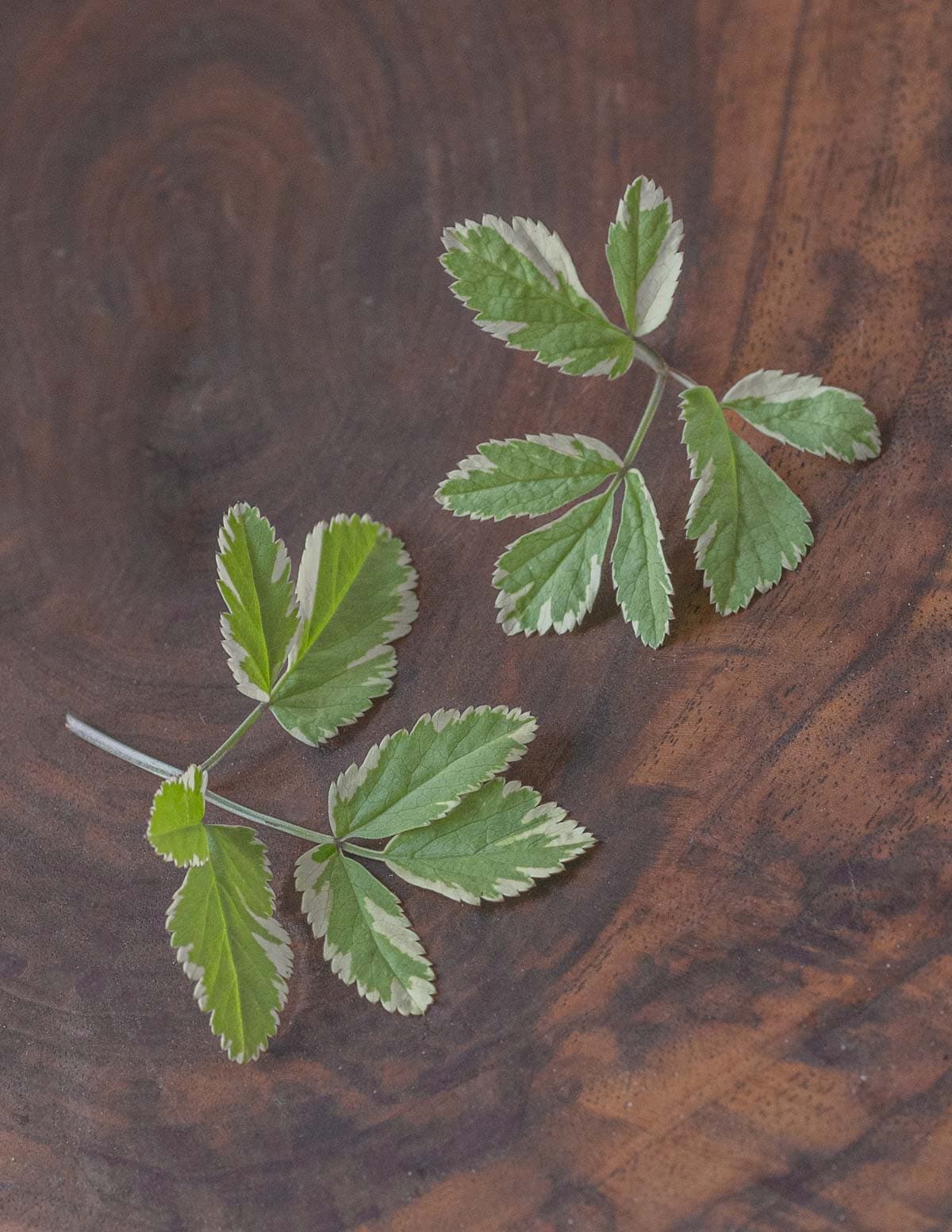
In the summer umbels of white flowers and seed heads will appear. The flowers are edible, but tiny. The seeds have a strong flavor many people won't care for, including me, and the same goes for the seeds.
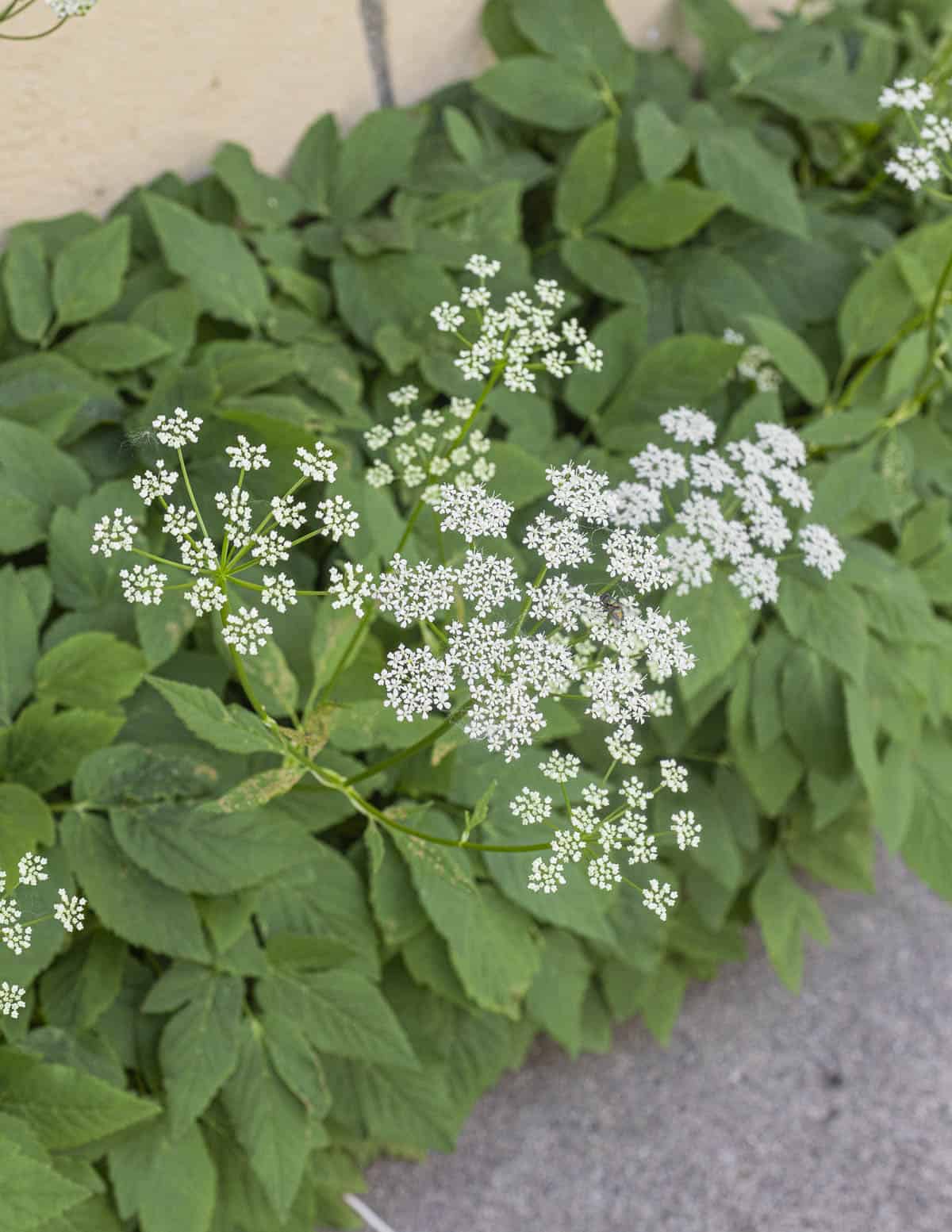
Look Alikes
There's a few native plants that look like ground elder, but none of them appear in similarly large, invasive colonies. This also only applies to plants with all-green leaves as the variegated varieties are easy to spot. Besides the plants mentioned below, golden alexanders could also be a look alike but only when very young. That said, this won't be a comprehensive list of look-alikes.
Maryland Sanicle / Sanicula marylandica
Sanicle leaves are edible and have a slightly similar celery taste, but they won't appear in a dense colonies and have different looking flowers and seeds. The leaf margins are also much more irregularly serrated. The plant is edible and tastes a bit similar.
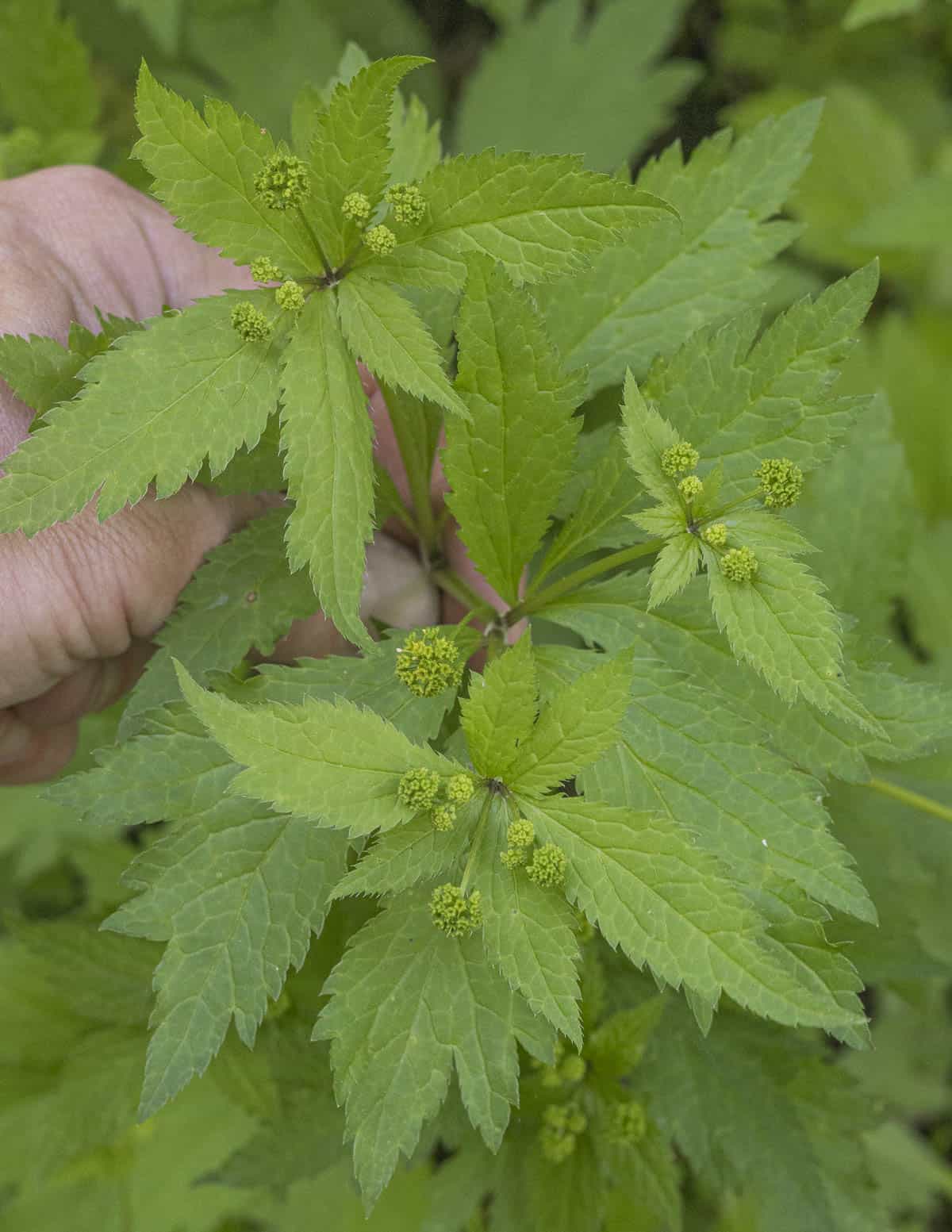
Honewort / Cryptotaenia canadensis
Honewort is a great edible plant related to Japanese mitsuba which can be used like parsley or chervil. Compared to Aegopodium, the leaves are more irregularly shaped.
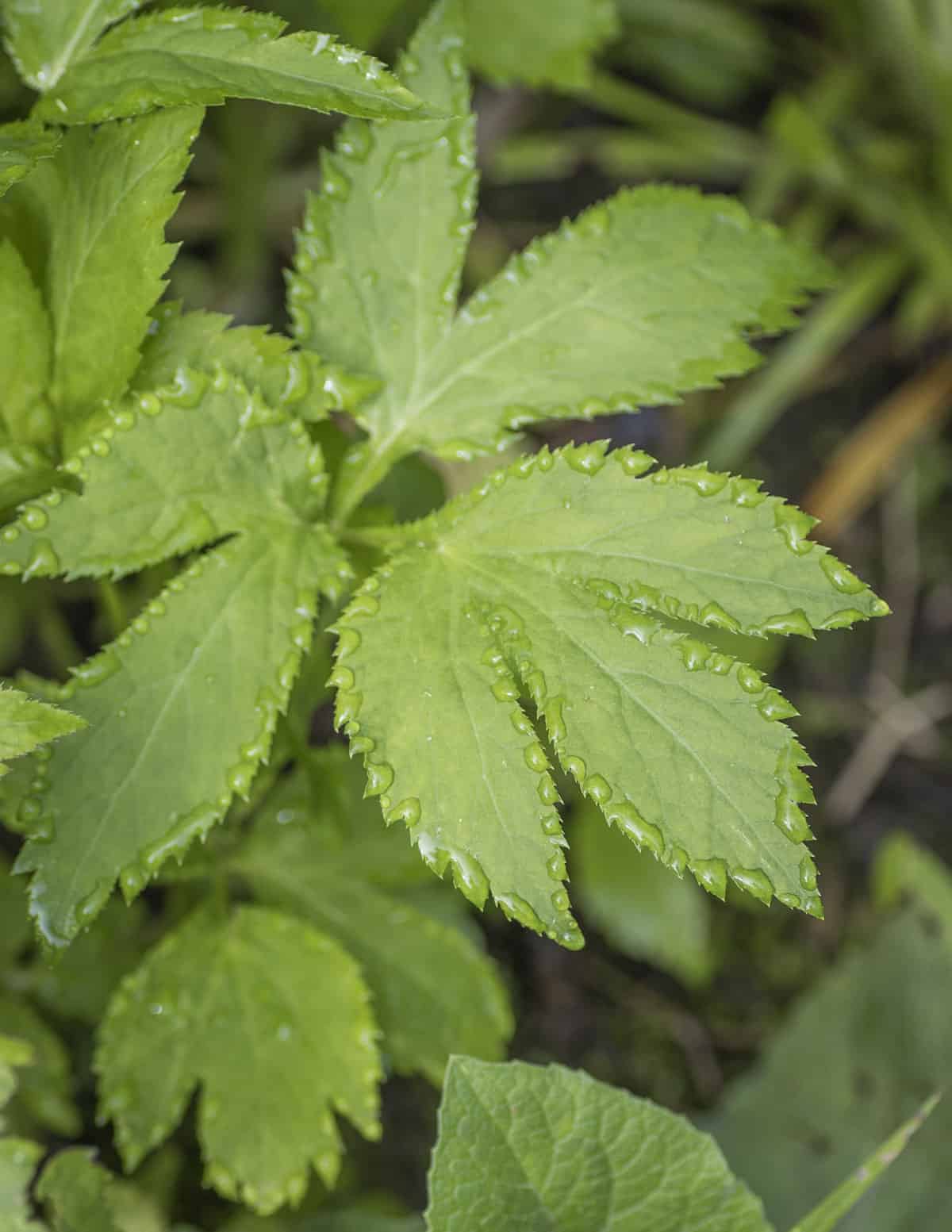
Angelica atropupurea
Young spring leaves of angelica could be mistaken for ground elder at a glance, but they have a very strong aroma of gin and are much larger plants.
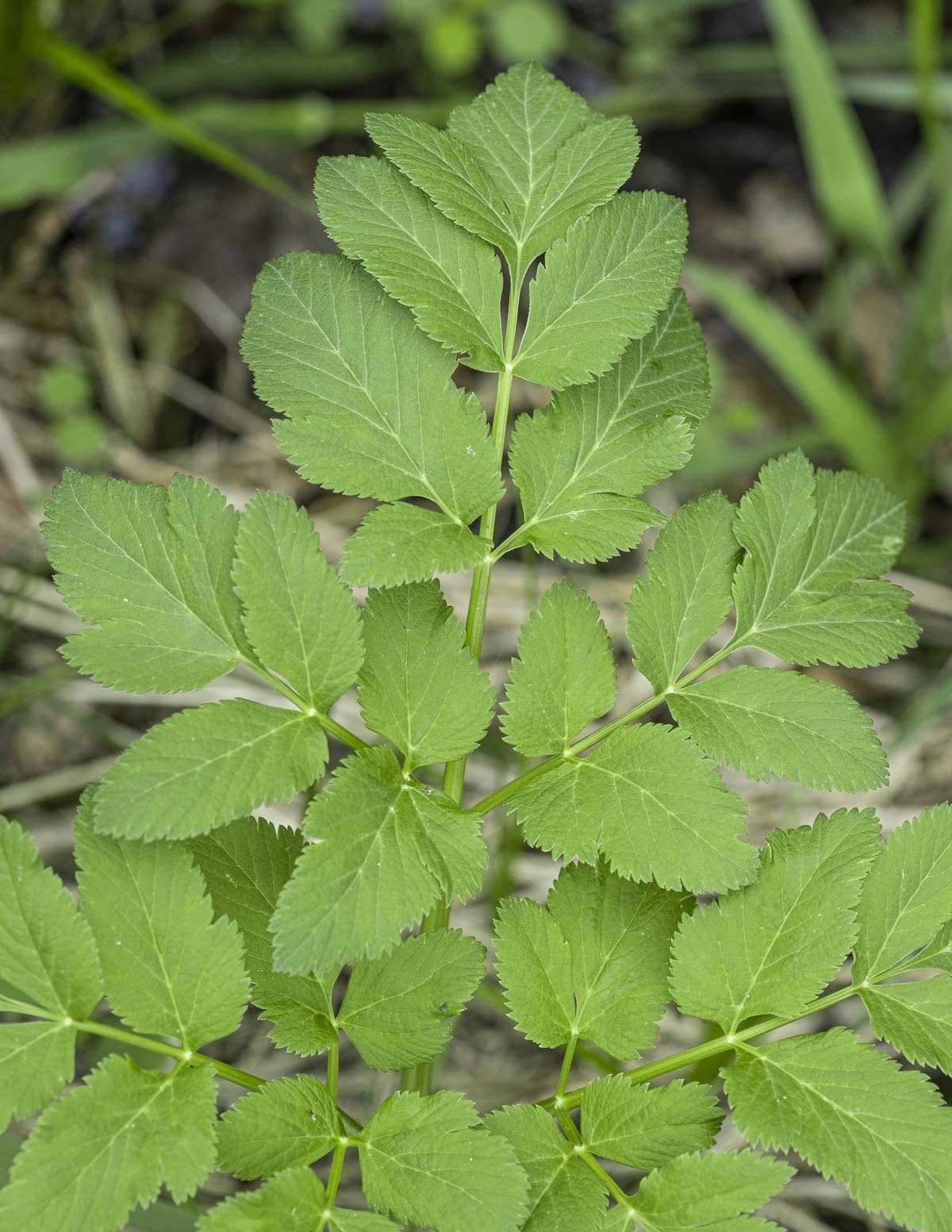
Is Ground Elder / Snow on the Mountain Invasive?
While the variegated leaves of snow on the mountain plants may be appealing, they, and the all-green variety are invasive in North America and difficult to control.
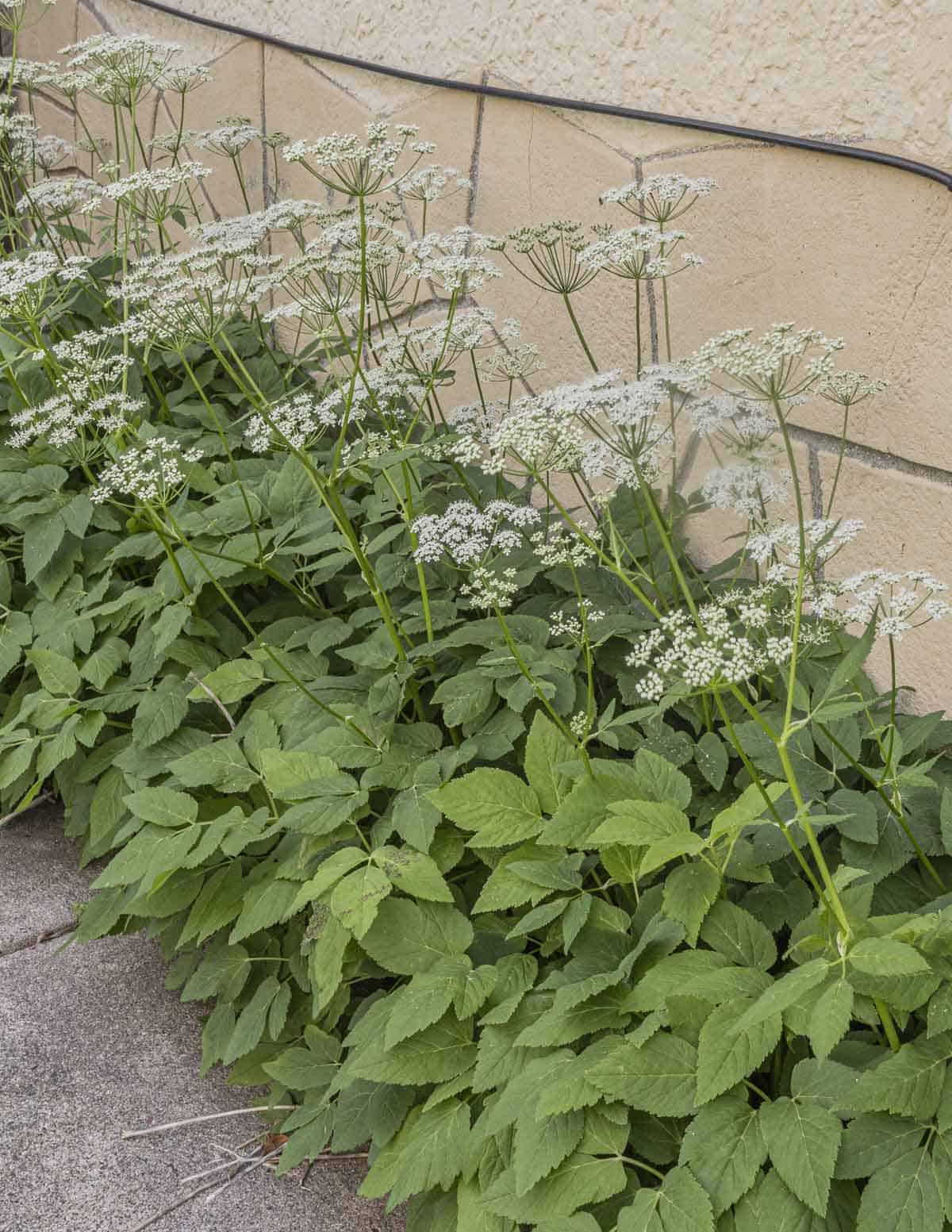
Just like creeping bellflower, the plants have a robust root structure spreading through underground rhizomes as well as seed. Left unchecked in the wild they'll crowd out native species.
Controlling and Removing Ground Elder
Ground elder is a very difficult plant to remove. The only consolation is that it doesn't get very tall (like Japanese knotweed). If you're like me and don't want to use systemic herbicides like glyphosate, there aren't many easy options. Unfortunately hand-pulling isn't one of them.
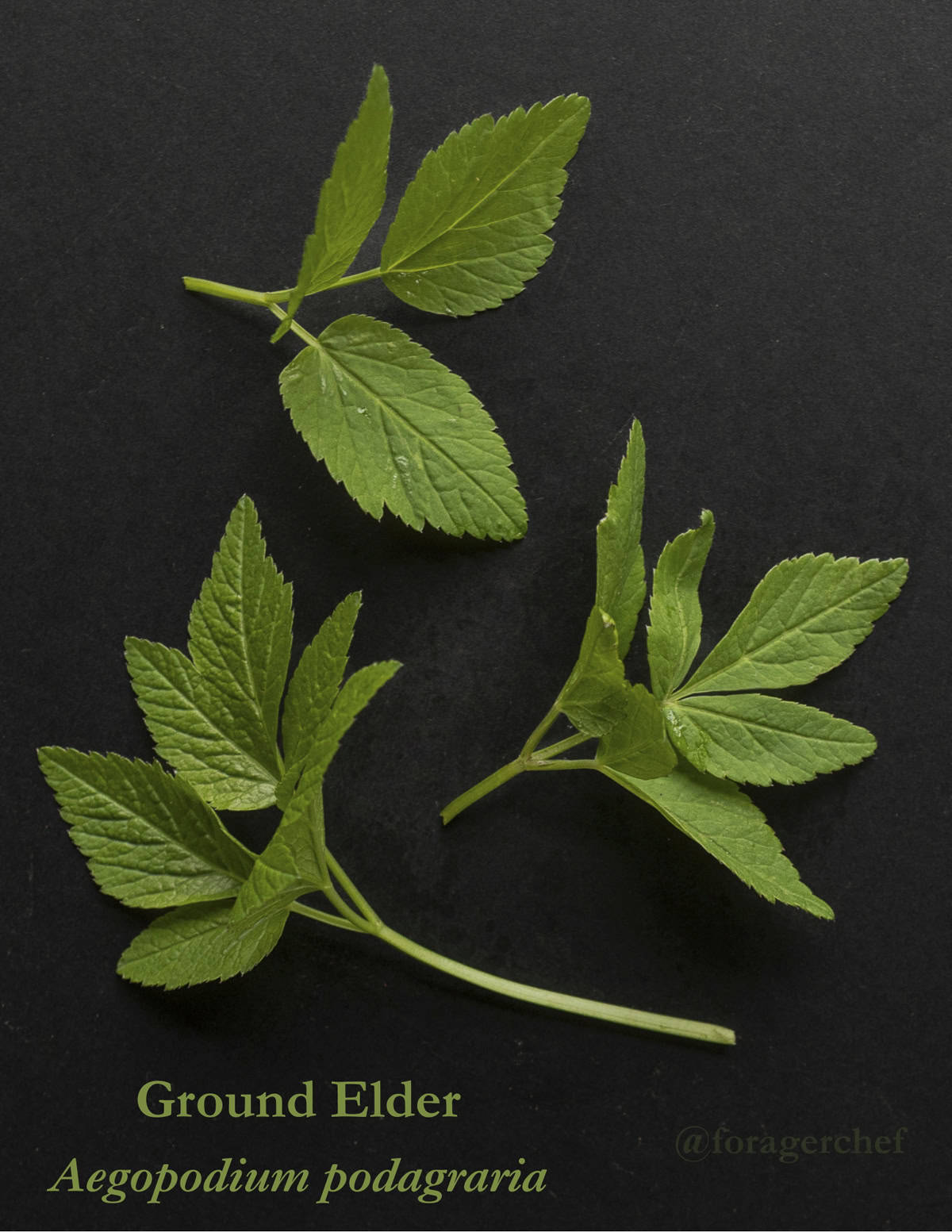
People I've spoken to recommend digging up to two feet down to remove all plants and roots, then covering the area with black plastic for six months to a year to "cook it". This is a lot of work and most people will find removing the plant very frustrating. Mine's spread underneath my deck so I doubt I'll ever be rid of it. But hey, at least it's edible.
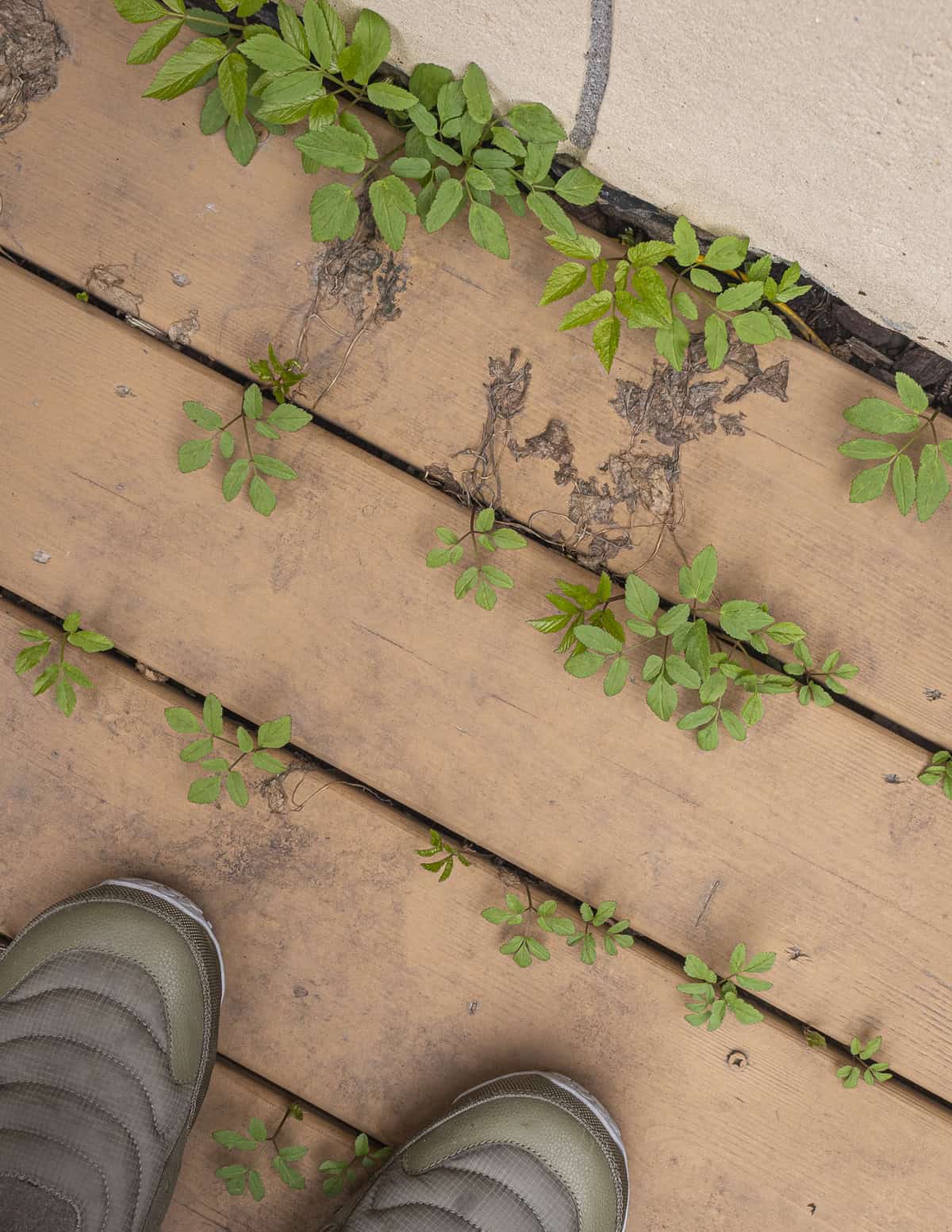
I've been planting other plants nearby that can colonize an area to help contain the spread, miner's lettuce, sheep sorrel and a few others. So far it's had the success of a deadbolt made of cheese puffs.
How to Cook Ground Elder
Like most plants, ground elder is best harvested before the plant flowers and the young leaves are the best to eat. After flowering the leaves take on a strong flavor and will be tough.

Harvesting is simple-grasp a handful of plants and cut them with a scissors.
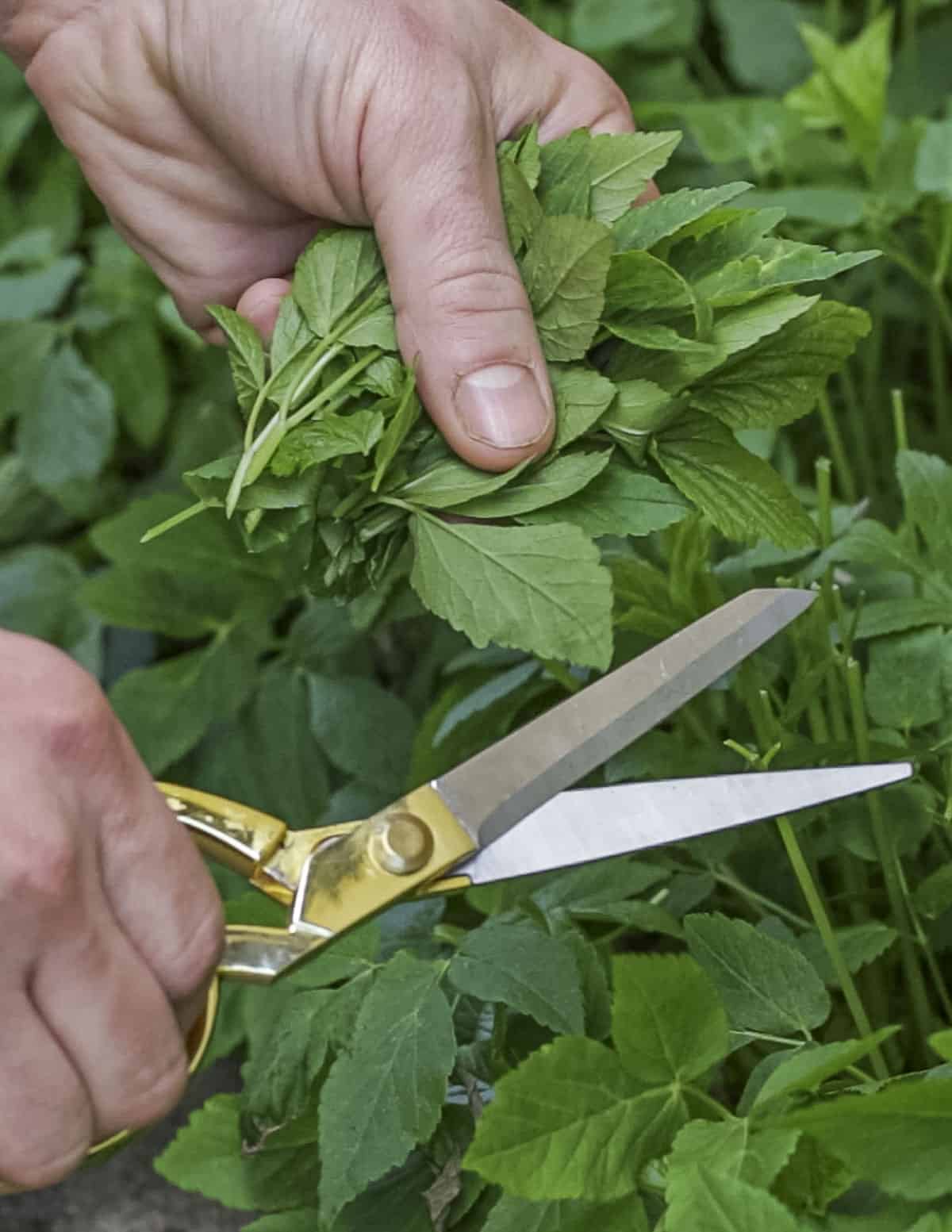
After harvesting the greens are soaked in cold water, then spun dry and put in a zip-top bag in the refrigerator where they'll last for a few weeks.

While young spring plants are the best, I have used older greens finely chopped like parsley for composed salads with good success.
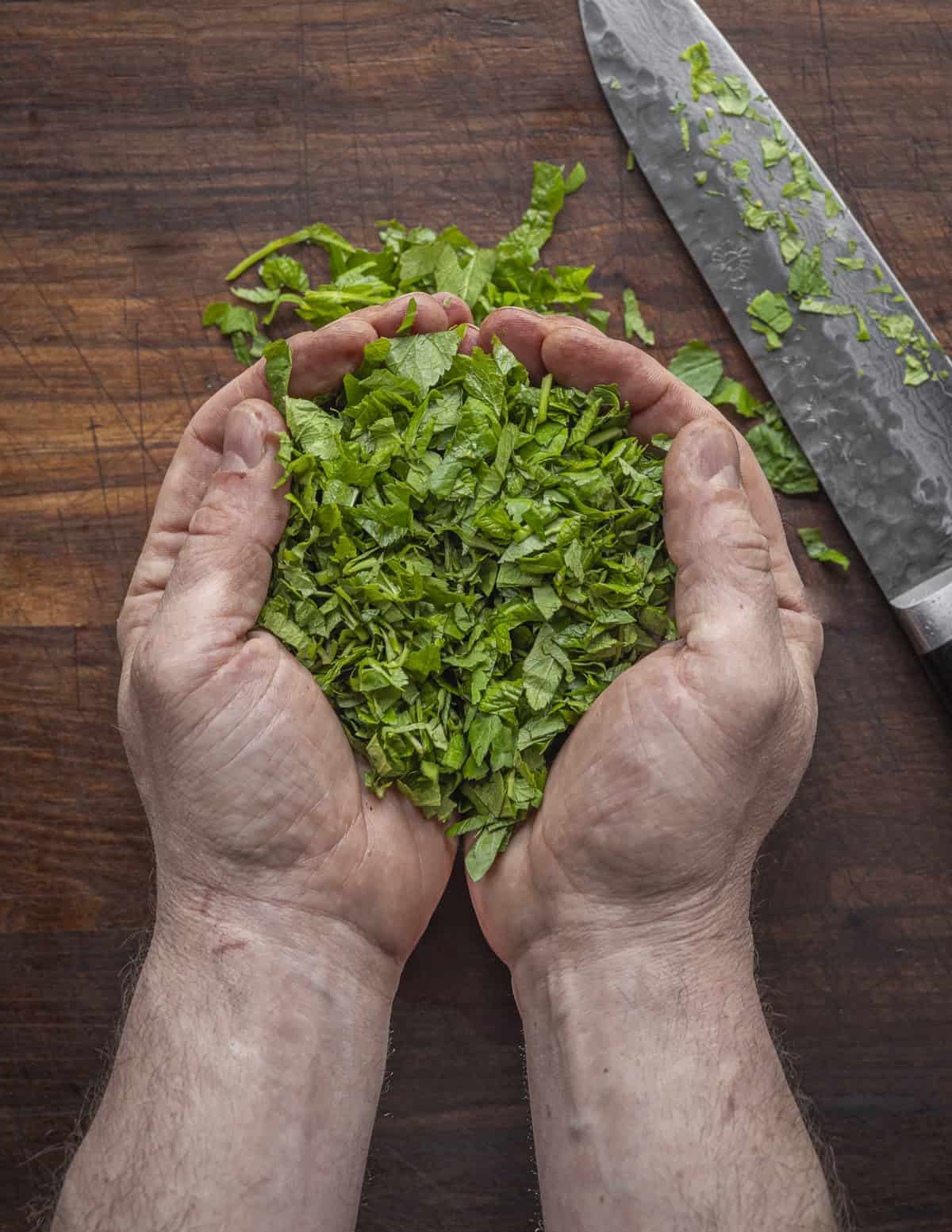
Especially when harvested young and tender in the Spring, the finely sliced leaves are a great substitute for parsley and no one will complain about the texture. My favorite thing to make is riffs on tabouleh.
Try tossing large handfuls of finely cut greens with cucumbers and scallions, or fresh green vegetables like the green chickpeas and fava beans below.
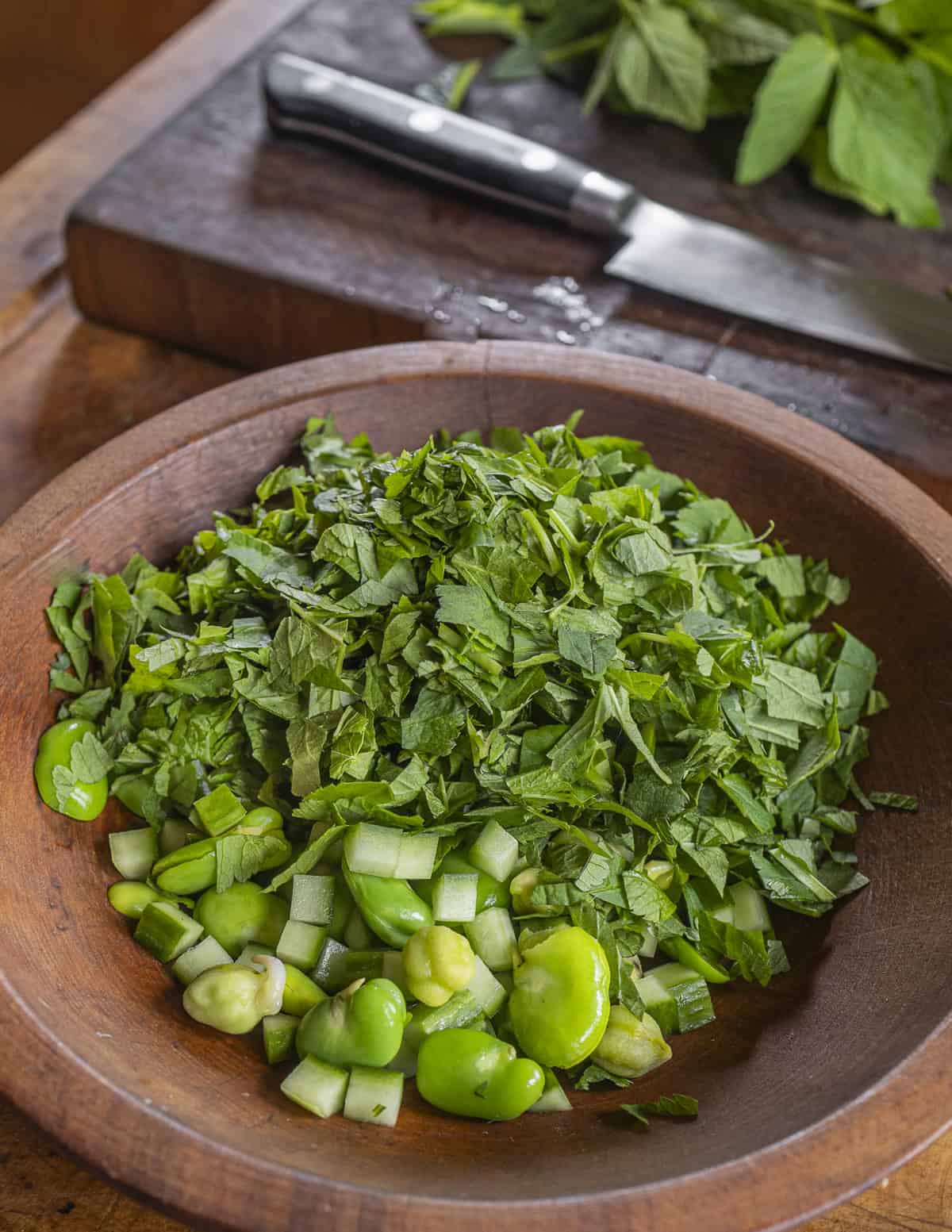
Adding a grain like wild rice or quinoa turns it into the kind of portable salad you can make ahead for busy days. I see a few more batches headed my way for morel season, likely inhaled unceremoniously at five am next crouched next to the car while I wait for the sun to rise.
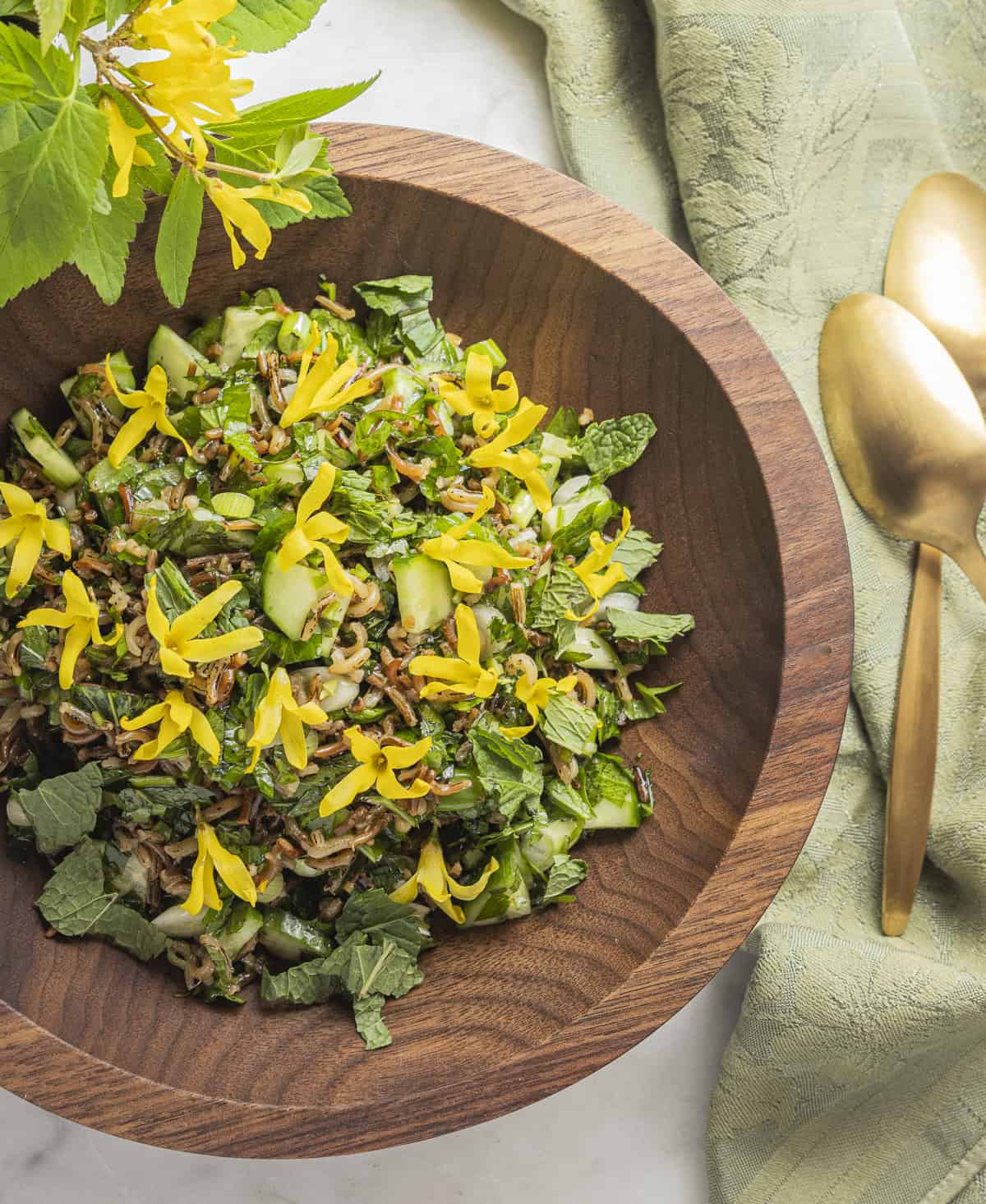
My favorite method for general cooking is simply boil the clusters of leaves in salted water until tender.
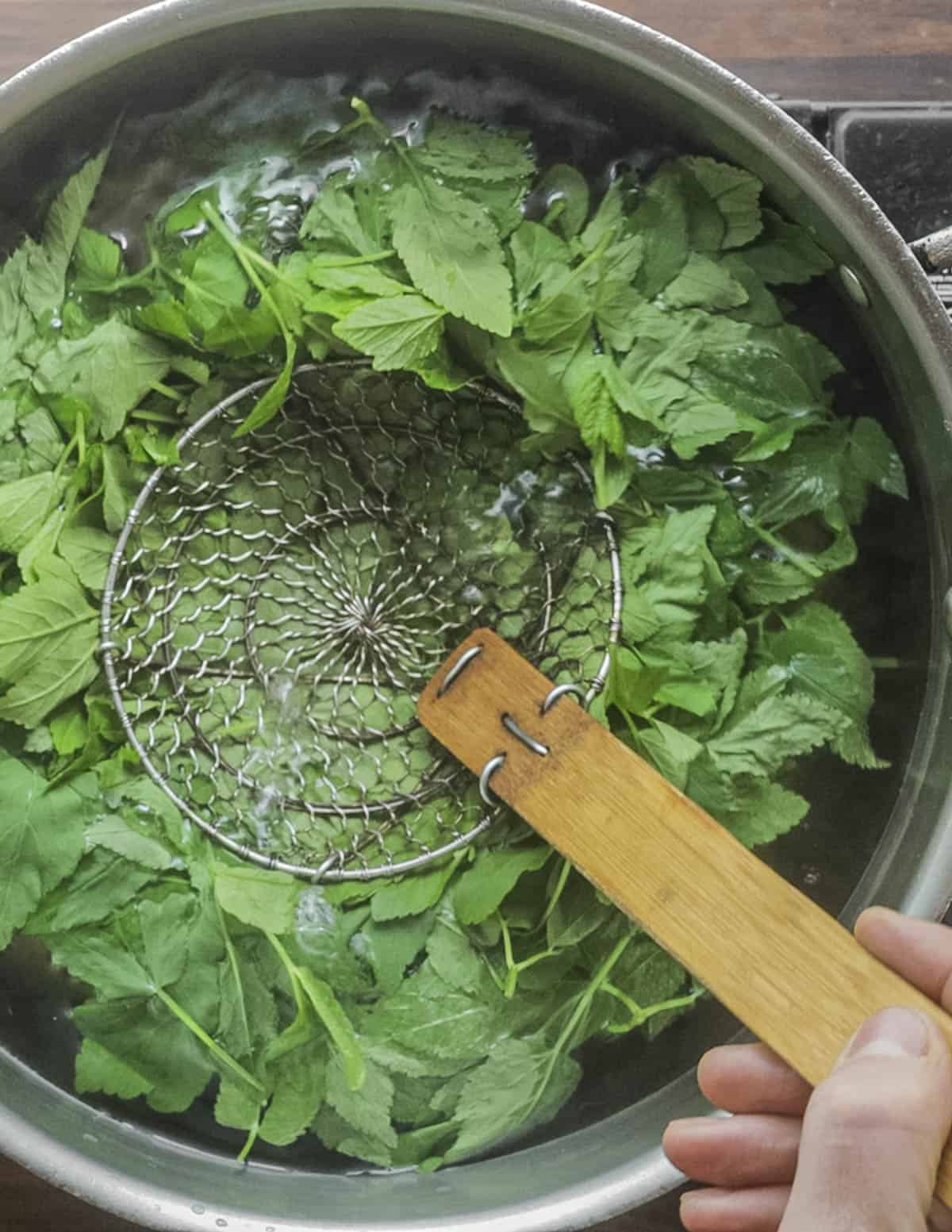
When the greens are tender and taste good to you, serve them with soft butter or olive oil at the table, a squeeze of lemon and salt.
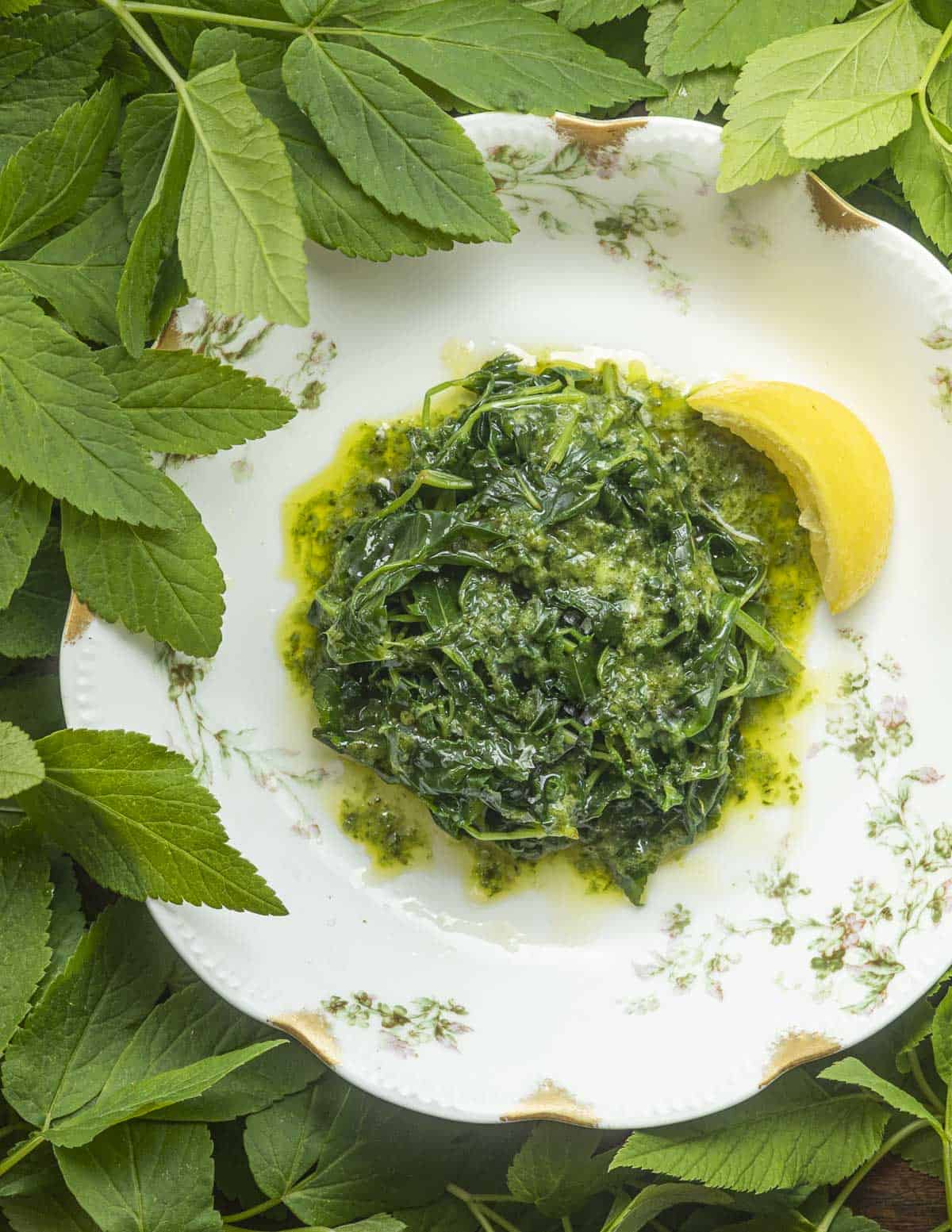
One nice thing to mention is the ease of eating the greens. The leaves and stems are usually only a few inches long, and the whole leaf and stem clusters can be twirled around a fork. Used to mop up olive oil or melted butter with a squeeze of lemon they make a unique dish of cooked leafy greens.
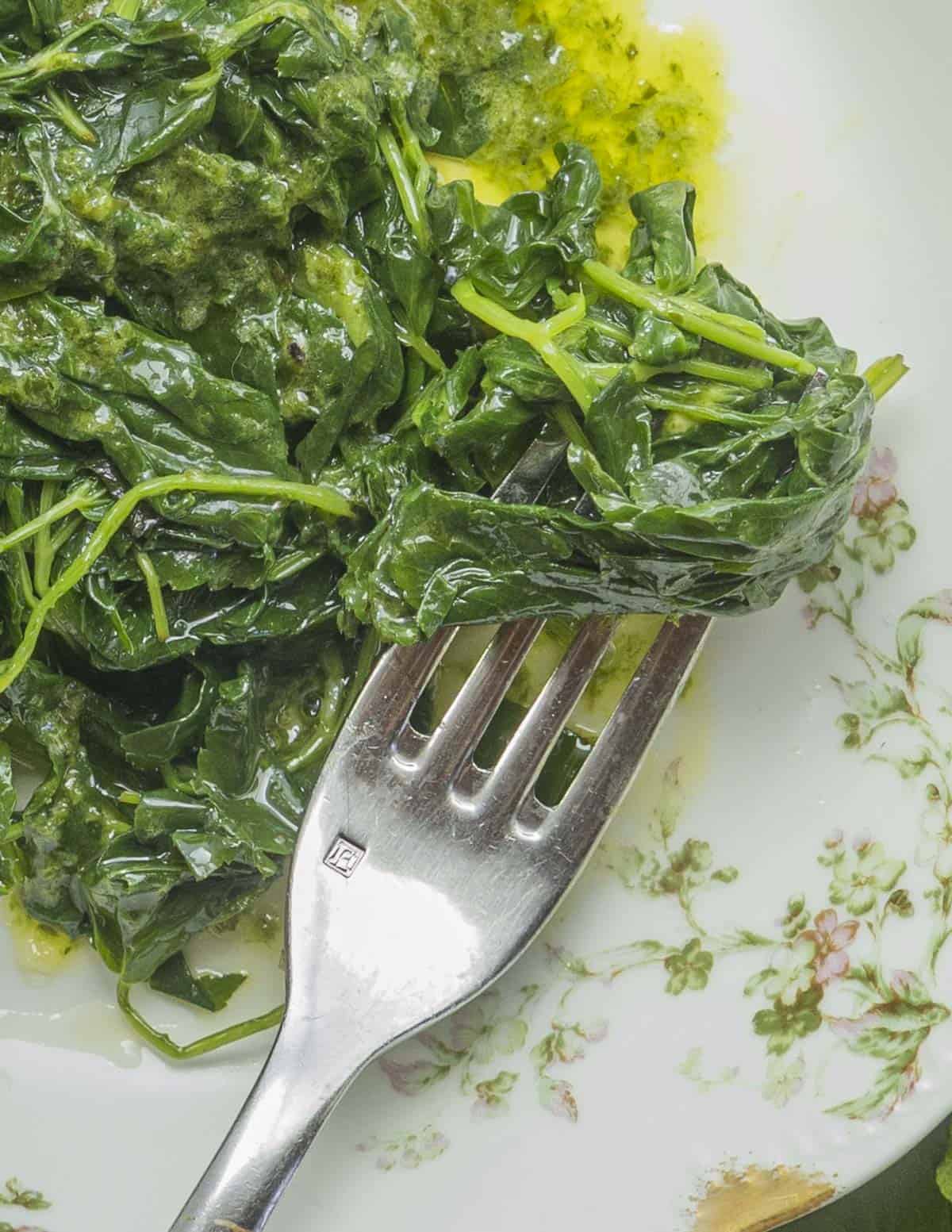
Ground elder is also a traditional food in some places within its native range. To date, one of the few references I have using the leaves as food is The Nordic Cookbook by Magnus Nilsson.
In Sweden where it's known as kirskål it might be cooked as a simple side or made into a ground elder soup, known as Kirskålsoppa. You can use my recipe for stinging nettle soup as a template for that.

Brendan
Nice write up on one of my favorite garden weeds. It's native but also much hated by gardeners here in Germany. Ursula Stumpf recommends planting bush beans or shell beans successively and it will drive the "Giersch" out.
But I love the stuff and I'm happy that we have a patch next to the bike rack in our urban back yard. I also get compliments if I mix it into in salads and sautes.
If you want a traditional German recipe that uses it, check out Gründonnerstagssuppe - that's Maundy Thursday Soup - traditionally made with Neunerleikräutern - the nine-part-herbs mix that includes a bunch of typical early-spring wild plants available to foragers in central Europe.
Alan Bergo
Thanks Brendan. I'm currently battling it at my place. It's like a gorilla in a phone booth.
jennifer
ugh - I was recently hired to rid a perennial garden of Bishop's Weed. The homeowner had previously been told about the digging and black plastic, but was not interested in going that route. I guess I am going to have to give her the good news - at least she can eat it!
Alan Bergo
I feel for you. Previous owners of my home planted it along the side of the house. Now it’s in the neighbors yard and is coming up through half of my deck after being here a year. Tricky thing with eating this green is that it gets tough fast.
Anita Zomer
This article re eating up the greens of Aegopodium podgraria is perfect for coming out this time of year. I was wondering if you would look up if Bishop’s Weed (used in monasteries) can also be harvested by the roots? I saw it somewhere but your article doesn’t mention the cooking of roots, so I am wondering if that use is actually true. Thanks.
Alan Bergo
Hi Anita. I spoke to some friends much more knowledgeable than me about this and no one had heard of eating the roots. I'll take a look at their size next time I dig some up, sorry I can't be more helpful here.
Beth
Goutweed hashbrowns
Louis Vogel
What to do with invasive grown cover?
EAT IT!
Thank you so much for this very much needed information!
Alan Bergo
Thanks Louis.
Jenny
I saw “snow on the mountain” in your title and immediately shouted “no way!!” 😆 That plant is everywhere and I just hate it— now I can at least get some benefit from it. Thanks for the info!
Alan Bergo
You bet, most of my friends call it ground elder but I knew I had to reference snow on the mountain here as it's soooo common.
Claudia Marieb
Good timing on releasing this video. There is a patch in the woods near my house and I always forget about them until they are big/flowering. This year I'll get 'em early and try this side dish.
Alan Bergo
Make sure to try some finely chopped up for tabouleh, or just a few large handfuls chopped and mixed with cukes, scallions and herbs, EVOO, lemon, etc-that's probably my favorite.
Claudia Marieb
I will!
Harry
What are the yellow flowers in your tabouleh?
Alan Bergo
Forsythia
Diane
How interesting. I was looking up cow parsnip after it was mentioned in a novel, but bishop's weed caught my eye. I grow it on the side of my house and cut the flowers off before they can seed. Now I can't wait to try eating it! The rabbits and deer must not be interested in it. My neighbor liked me to bring her the flowers. She put the stems in water with food coloring, giving them a soft color, then they were pressed and used on cards.
Alan Bergo
Thanks for commenting Diane. I need to remember to cut some of the flowers to put in vases this year.
Beth
Can I freeze it? I can’t possibly eat all of the gout weed that I am growing in my yard!
Alan Bergo
Absolutely, blanch in boiling water until just wilted, squeeze dry, vacuum seal and freeze.
Pixie
I cut the flowers to prevent seeding, too. This year I'll try your coloring idea. Sounds fun!
Alan Bergo
Thanks Pixie.
Benning
Can’t thank you enough for this! 💖